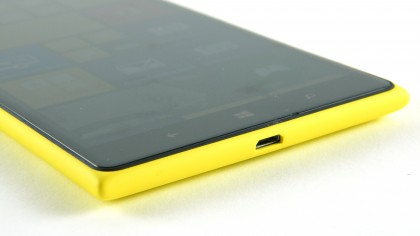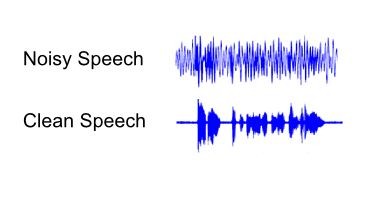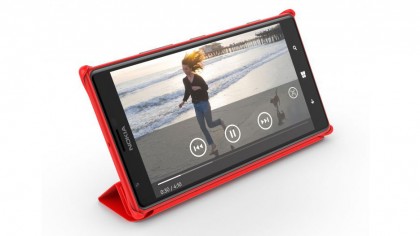Background noise reduction: one of your smartphone's greatest tools
Sounds good to me

In a smartphone world dominated by data speed and increasing storage, it seems almost archaic to laud a technology that wildly improves your ability to speak to another person.
But background noise reduction, a feature found in nearly every high-end and mid-range smartphone, has quietly revolutionised our ability to conduct conversations on the go - here's what you need to know about this intelligent tech that stops you being drowned out every time a car goes past.
The first thing you might not know is that your phone has more than one microphone. In most cases this will be a secondary or tertiary microphone, and will be placed at strategic points around your handset.
From here, simple mathematics is used to create an algorithm that works out just what noise is present and how to eradicate it.
A primary microphone is aimed to your mouth to record your voice, whilst also picking up any noise from around you. In a single microphone circuit, this comprises all the data that is sent via the air waves to the receiving handset.

With a secondary microphone located elsewhere, usually near the top and on the back of the handset (so it doesn't pick up so much speech), a lot of background noise can be removed.
One company making strides in noise reduction is Qualcomm. Its Fluence technology is built into a number of its chips. These chips are the same ones that are found within any number of the highest end flagships, whilst also making its way down to even a few budget handsets.
Sign up for breaking news, reviews, opinion, top tech deals, and more.
All phones running a Snapdragon SoC, including the 800 and latest Snapdragon 801, include Fluence. This means that the HTC One, LG G2, Galaxy S4 and Galaxy S5 all include the technology.
And even lower-end phones will be packing the noise cancelling technology, although many will be devoid simply because it costs more to chuck in another microphone or two.
2 is better than 1
Imagine a scenario when you're walking past some really loud roadworks whilst on the phone. Only a few years ago this would have meant that a mobile call would have been nigh-on impossible as you get drowned out by the machinery.
Old feature phones particularly struggled in this area, unable to cope due to single microphones and the lack of power that sat underneath the hood.

Today things are completely different as a second microphone can help remove the sound of those road works. As your voice hits the primary microphone, it comes in much stronger than when it hits the secondary.
The two microphones send a signal to your handset's processor, and it compares the two soundwaves coming in. Working out which is your voice and which isn't is the tricky bit, but once that's done your phone will apply a negative sound wave to the call: put simply, it counteracts whichever sound is unwanted and makes it inaudible by reversing it.
This ensures that only the sound of your voice is sent to your contact's handset. Bluetooth headsets also use the same technology so you aren't tied down to holding your phone to your head to get the same outcome.
Another company pushing the cancellation technology is Li Creative Technologies, and they've got some comparisons on how noise cancellation can alter the way your call sounds - it's the hiss in the background that gets hit the hardest, as you can hear.
Active cancellation
Background noise reduction is also making another appearance on the likes of the Sony Xperia Z2, working in a different way to that of ensuring clear voices.
This works instead in the same way as active noise cancelling headphones, designed instead to ensure that the music or video that you are listening to is delivered to your ear drums in the clearest manner, unobstructed by the noises of the world around you, but doing away with the clunky box that adorns most headphones that offer the same tech.
To work, the Xperia Z2 needs headphones that come equipped a secondary microphone on each ear, that track the noises from the world around you. These then are sent to the phone, which inverts the sound wave before throwing it back up to your ears with the external noise reduced.
Unfortunately this is only possible on the Xperia Z2 (at least for the moment) with its proprietary MDR-NC31Em headphones. Hopefully this technology makes it across to other handsets and earphones, as it should theoretically be possible to use the microphone on most hands free headsets to deliver the same tech.
This technology doesn't come without its dangers though, as it is used to actively cancel the noise of the world around you to make your audio come through clearer. As with every set of headphones, be wary when out and about - look both ways before you cross the street and all that.
And it's not just noise cancellation that these microphones bring: on the higher-end handsets, such as those from Nokia and Apple, these mics help dramatically when recording at gigs or other venues with high ambient noise.

These HDR microphones (or high amplitude audio capture) have a special membrane that means you don't get that hideous distortion on your home movie, and the placement of up to three mics means that the phone can actually process the sound spatially, giving a more targeted priority to that which you're actually trying to film.
Combined with the noise cancellation abilities of your phone, this means that you'll mostly hear the artist rather than the screaming fans around you - and when things get a little louder, it won't sound like muddy audio mess.
So next time you're walking down the street, pass some noisy roadworks and cars and still can hold a conversation... you'll know why.